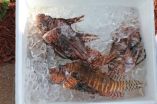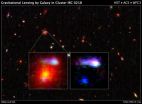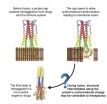(Press-News.org) ROCHESTER, Minn. — Implementation of an algorithm aimed to diagnose pediatric patients with suspected appendicitis reduces the utilization of computed tomography (CT) scans, without affecting diagnostic accuracy, Mayo Clinic Children's Center researchers have found. The study was recently published in the journal Surgery.
Acute appendicitis is the most common cause of acute abdominal pain in children. Appendicitis occurs when the appendix becomes inflamed and filled with pus. CT scans are often used to diagnose acute appendicitis because they are accurate, widely available and have the ability to provide clinicians with advanced information in appendicitis cases suspected of complications.
However, CT scans are expensive and expose patients to ionizing radiation. "This algorithm was developed by a multidisciplinary group of pediatric emergency room physicians, pediatric surgeons and radiologists to eliminate unnecessary exposure to radiation," explains Michael B. Ishitani, M.D., lead author of the study.
The study compared pediatric patients, under the age of 18, who underwent an appendectomy for acute appendicitis pre-algorithm implementation and post-implementation. Researchers studied 331 pediatric cases over the course of five years, and found that CT utilization decreased from 39 percent to 18 percent after the algorithm was in place.
Researchers found that when the algorithm was implemented, use of CT scans in patients dropped by over 50 percent, without affecting diagnostic accuracy, proving that reducing the use of CT scans when evaluating patients for appendicitis is safe and cost-effective.
"Implementation of this algorithm across multiple centers is the ideal outcome of this study, followed by further evaluations over time to ensure that the low rate of CT scan use continues," says Dr. Ishitani.
INFORMATION:
Other study authors include Stephanie F. Polites, M.D., and scholar, Robert D. and Patricia E. Kern Center for the Science of Health Care Delivery; Mohamed I. Mohamed, M.B.B.S.; Elizabeth B. Habermann, Ph.D., and scientific director of the Surgical Outcomes Program, Robert D. and Patricia E. Kern Center for the Science of Health Care Delivery; James L. Homme, M.D.; Jana L. Anderson, M.D.; Christopher R. Moir, M.D. and Abdalla E. Zarroug, M.D., all of Mayo Clinic.
About Mayo Clinic
Recognizing 150 years of serving humanity in 2014, Mayo Clinic is a nonprofit worldwide leader in medical care, research and education for people from all walks of life. For more information, visit 150years.mayoclinic.org, http://www.mayoclinic.org and newsnetwork.mayoclinic.org.
MEDIA CONTACT: Kelley Luckstein, Mayo Clinic Public Affairs, 507-284-5005, newsbureau@mayo.edu
Algorithm reduces use of CT scans when diagnosing children with appendicitis
2014-07-31
ELSE PRESS RELEASES FROM THIS DATE:
Study of bigeye tuna in Northwest Atlantic uses new tracking methods
2014-07-31
AMHERST, Mass. – A first-of-its-kind study of bigeye tuna movements in the northwestern Atlantic Ocean led by Molly Lutcavage, director of the Large Pelagics Research Center at the University of Massachusetts Amherst, found among other things that these fish cover a wide geographical range with pronounced north-south movements from Georges Bank to the Brazilian shelf, and they favor a high-use area off Cape Hatteras southwest of Bermuda for foraging.
This NOAA-funded research, which used a new approach to study one of the most important commercial tuna species in the ...
Unintended consequences: More high school math, science linked to more dropouts
2014-07-31
As U.S. high schools beef up math and science requirements for graduation, researchers at Washington University in St. Louis have found that more rigorous academics drive some students to drop out.
The research team reported in the June/July issue of the journal Educational Researcher that policies increasing the number of required high school math and science courses are linked to higher dropout rates.
"There's been a movement to make education in the United States compare more favorably to education in the rest of the world, and part of that has involved increasing ...
Is it really a concussion? Symptoms overlap with neck injuries so diagnosis is tough call
2014-07-31
BUFFALO, N.Y. – Athletes and others reporting cognitive difficulties after a head injury are usually diagnosed as having had a concussion. But is it really a concussion? A new study published by University at Buffalo medical faculty finds that many of the same symptoms are common to concussions and to injuries to the neck and/or balance system, known collectively as cervical/vestibular injuries.
The research was based on responses about symptoms from 128 patients – some of whom were professional athletes – who were being treated at UB's Concussion Management Clinic in ...
Invasive lionfish likely safe to eat after all
2014-07-31
Scientists have learned that recent fears of invasive lionfish causing fish poisoning may be unfounded. If so, current efforts to control lionfish by fishing derbies and targeted fisheries may remain the best way to control the invasion. And there's a simple way to know for sure whether a lionfish is toxic: test it after it's been cooked.
Pacific lionfish were first reported off the coast of Florida in the 1980s, and have been gaining swiftly in number ever since. They're now found in marine habitats throughout the tropical and subtropical Western Atlantic, Caribbean ...
Certain Arctic lakes store more greenhouse gases than they release
2014-07-31
New research, supported by the National Science Foundation (NSF), counters a widely-held scientific view that thawing permafrost uniformly accelerates atmospheric warming, indicating instead that certain Arctic lakes store more greenhouse gases than they emit into the atmosphere.
The study, published this week in the journal Nature, focuses on thermokarst lakes, which occur as permafrost thaws and creates surface depressions that fill with melted fresh water, converting what was previously frozen land into lakes.
The research suggests that Arctic thermokarst lakes ...
NASA's Fermi space telescope reveals new source of gamma rays
2014-07-31
Observations by NASA's Fermi Gamma-ray Space Telescope of several stellar eruptions, called novae, firmly establish these relatively common outbursts almost always produce gamma rays, the most energetic form of light.
"There's a saying that one is a fluke, two is a coincidence, and three is a class, and we're now at four novae and counting with Fermi," said Teddy Cheung, an astrophysicist at the Naval Research Laboratory in Washington, and the lead author of a paper reporting the findings in the Aug. 1 edition of the journal Science.
A nova is a sudden, short-lived brightening ...
Study finds physical link to strange electronic behavior
2014-07-31
HOUSTON -- (July 31, 2014) -- Scientists have new clues this week about one of the baffling electronic properties of the iron-based high-temperature superconductor barium iron nickel arsenide. A Rice University-led team of U.S., German and Chinese physicists has published the first evidence, based on sophisticated neutron measurements, of a link between magnetic properties and the material's tendency, at sufficiently low temperatures, to become a better conductor of electricity in some directions than in others.
The odd behavior, which has been documented in a number ...
Hubble shows farthest lensing galaxy yields clues to early universe
2014-07-31
Astronomers using NASA's Hubble Space Telescope have unexpectedly discovered the most distant galaxy that acts as a cosmic magnifying glass. Seen here as it looked 9.6 billion years ago, this monster elliptical galaxy breaks the previous record-holder by 200 million years.
These "lensing" galaxies are so massive that their gravity bends, magnifies, and distorts light from objects behind it, a phenomenon called gravitational lensing. Finding one in such a small area of the sky is so rare that you would normally have to survey a region hundreds of times larger to find just ...
Researchers uncover clues to flu's mechanisms
2014-07-31
HOUSTON – (July 31, 2014) – A flu virus acts like a Trojan horse as it attacks and infects host cells. Scientists at Rice University and Baylor College of Medicine have acquired a clearer view of the well-hidden mechanism involved.
Their computer simulations may lead to new strategies to stop influenza, perhaps even a one-size-fits-all vaccine.
The discovery detailed this week in the Proceedings of the National Academy of Science shows the path taken by hemagglutinin, a glycoprotein that rides the surface of the influenza virus, as it releases fusion peptides to invade ...
UF study advances 'DNA revolution,' tells butterflies' evolutionary history
2014-07-31
GAINESVILLE, Fla. --- By tracing nearly 3,000 genes to the earliest common ancestor of butterflies and moths, University of Florida scientists have created an extensive "Tree of Lepidoptera" in the first study to use large-scale, next-generation DNA sequencing.
Among the study's more surprising findings: Butterflies are more closely related to small moths than to large ones, which completely changes scientists' understanding of how butterflies evolved. The study also found that some insects once classified as moths are actually butterflies, increasing the number of butterfly ...









